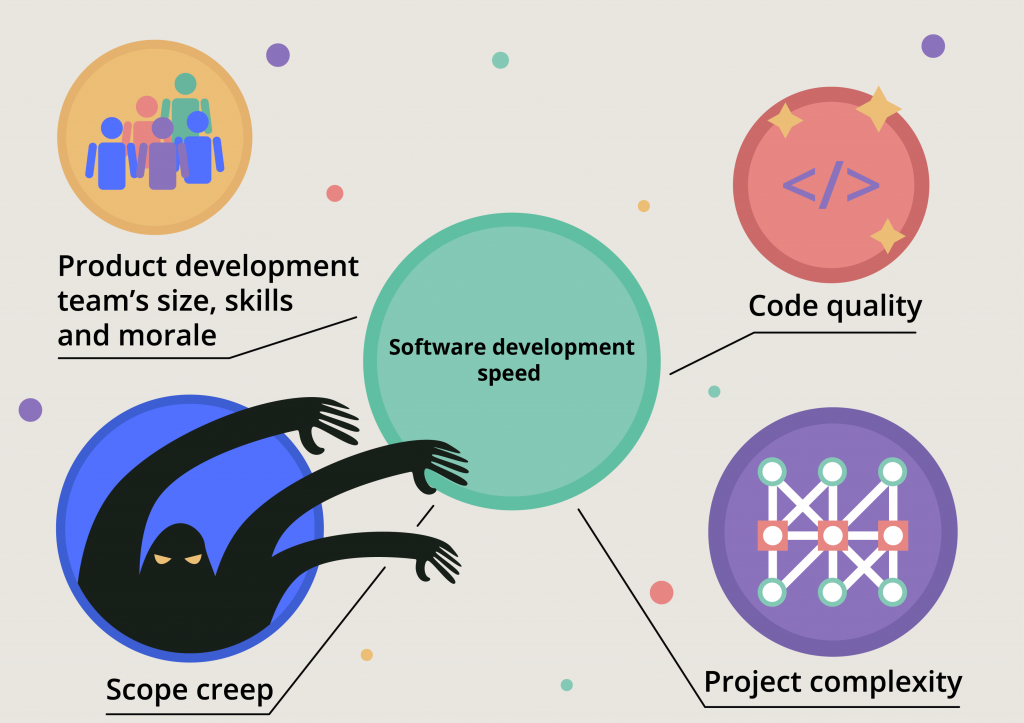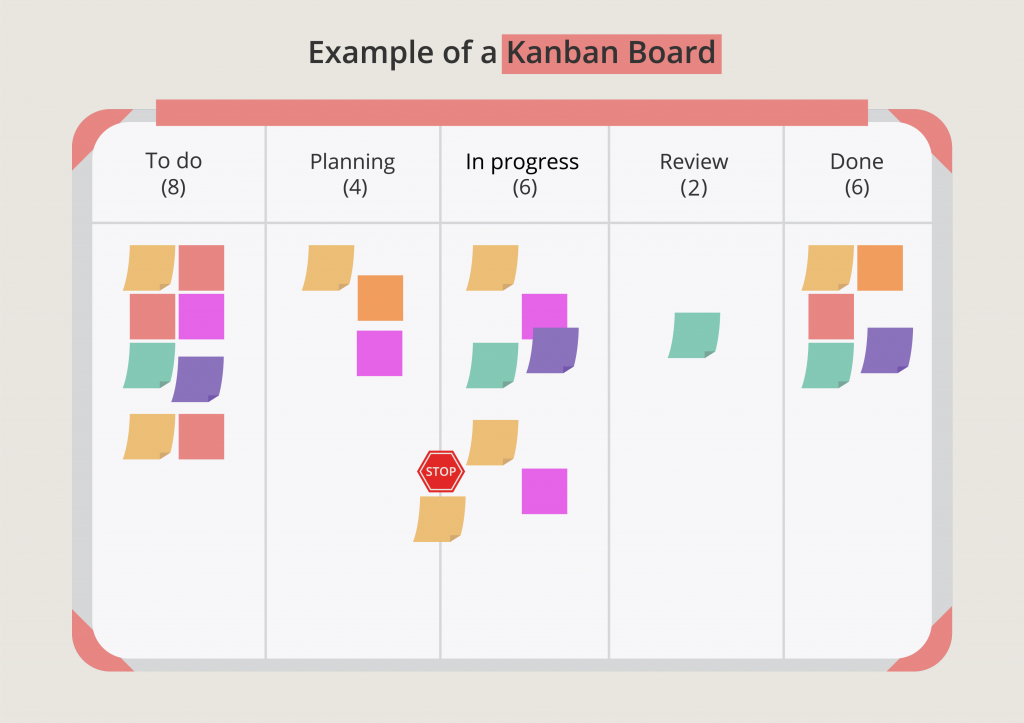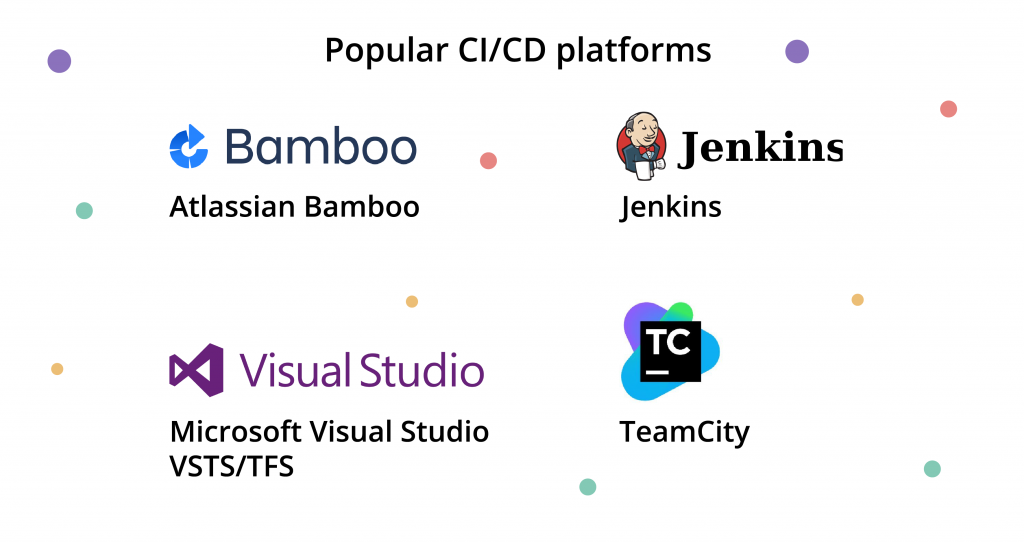How to Speed Up Software Development

IT companies and their technical teams are constantly pressured to accelerate software development. Companies need to meet strict deadlines and reduce time-to-market to get ahead of the competition and not to lose their market share. Then, they have to quickly adapt their products to changing conditions and requirements.
The competitive global industry also requires that they consistently increase product quality while decreasing costs.
The complex process requires creative efforts by many people through multiple stages of the software development life cycle.
Moreover, it is constrained within the so-called “project management triangle” of scope, resources, and time, with the product’s quality at the center.
Attempts to speed things up will most likely impact the other aspects, but luckily, certain best practices can help you ensure high quality while accelerating software development.
For instance, many established companies and startups resort to offshore outsourcing to speed up app development.
If you are reading this article, you may be one of those entrepreneurs.
Even if your current software development process goes smoothly, there is always room for improvement.
If not yet, read on to learn how to develop software faster and better with your future outsourcing partner. Our advice is based on Alternative-spaces’ experience in delivering custom software solutions since 2000.
First, let’s review some of the factors that cause project delays and increase time-to-market in software development.
Factors that Impact Software Development Speed
Project complexity
Every challenge a team encounters slows down the development pace. They can result from:
- Technical complexity. These technical and design challenges may be related to complex software architecture, third-party integrations, innovative solutions, etc., as required by the target audience’s needs, the load the system should sustain, the number of users, and other factors.
- Requirement complexity. The clarity of requirements promotes faster software development, whereas difficulties with understanding the project requirements and business objectives have the opposite effect.
- Deadline complexity. When the estimated project time frame does not match the actual scope of work, unrealistic deadlines put additional pressure on the team, may cause hasty decisions, neglect of quality assurance, and other problems.
- Structural complexity. When too many stakeholders, workflows, resources, and other components are involved in product development, they become more difficult to coordinate, manage, and control.
Increasing complexity hampers the development process, requires additional skills and resources, and makes it difficult to spot and fix bugs. When tasks pile up and the team members feel overwhelmed, they make more errors. The more problems the team encounters, the lower their software development speed.
Product development team’s size, skills, and morale
The team’s overall performance depends on each team member. For example, insufficiently qualified personnel can make mistakes that cause project delays. If everybody is skilled, experienced, knowledgeable about the project’s subject, motivated, and collaborates with everyone else, they can do the job faster.

Unrealistic deadlines and poor management may lead to overwork. When multitasking goes up, productivity goes down. Even a great developer, if forced to code for 10+ hours daily, may do more harm than good at the end of the day. The company will have to pay extra for overtime, when their productivity is much lower than during normal working hours. Finally, exhausted programmers may decide to quit just when you need them most.
Hiring more programmers may hardly speed up software development process. New team members, especially junior developers, will take a while to onboard and train, diverting existing team members from their work.
Even after that, your new development pace might disappoint you due to more complicated internal communication and management associated with bigger teams.
Code quality
The development pace and code quality are a two-way street. If a company’s quality standards are high, they usually are okay with a relatively time-consuming process.
If a team has super tight deadlines and too many tasks to complete in a sprint, they may rush the process by taking shortcuts, neglecting code quality, and skipping tests. Poor code with bugs will require fixing issues and rewriting parts and features later.
On big projects, minimizing proper planning and analysis, code reviews, or testing for the sake of faster iterations may jeopardize the project’s progress in the long run.
Scope creep
Even a seemingly small change in scope may result in increased system complexity and require the revision of the entire architecture and adjustment of the design. The majority of projects expand to some extent, and the management of changing requirements is integral to Agile methodologies. Naturally, the development of more features will consume more resources or time. Most entrepreneurs are aware of this.
What teams should avoid is uncontrolled expansion of product or project scope, when more features and requirements are added than originally planned without adjustments to time, cost, and resources. Their work speed will be affected, most likely quite badly, if the requirements change too frequently and not all changes are discussed with the team and recorded properly.

Addressing these factors is the first step to fast software development without compromising product quality. The following chapter offers more advice.
How to Develop Software Faster and Better
There are many ways to speed up software development on your outsourced projects. You can look for specific terms on vendors’ websites and programmers’ CVs when hiring. You can also interact with the team in certain ways and require that they follow certain best practices. Whatever your situation, we hope the following tips will be helpful.
1. Measure to improve
We at Alternative-spaces love metrics: we can improve only those things that we can measure. Before trying to accelerate software development cycles, scale your team, or improve your app’s or website’s design, it’s important to understand where your project currently stands.
Analyze various data and use specific criteria to assess your present situation. Set your goals and after implementing chosen best practices, compare the results with what you expected.
For example, many developers and project managers (PMs) measure performance in lines of code.
We use team velocity as a more Agile way to measure software development speed. While performance, a related metric, is primarily concerned with doing work faster, velocity is about providing value without sacrificing the quality. Basically, it measures the team’s overall performance and productivity based on the volume of features or user stories delivered within a given period, such as a two-week sprint typical for Scrum.
2. Proper planning
Alternative-spaces provides product discovery services as the first step of the software development process. Its deliverables may include a step-by-step project plan, specifications, mockups, and other prerequisites for smooth and timely product development. This will help you and your team share clear goals and project scope.
Understanding its complexities, potential challenges, and risks, the developers will be prepared to tackle them and avoid delays.
Another approach that speeds up product development is to start small and steadily progress through multiple stages or iterations. Namely, we recommend building a minimum viable product (MVP) before taking a deep dive into end-to-end product development. Many feature ideas may prove to be failures immediately.
Moreover, end-users typically use only up to 20% of a product’s functionality, so it’s not only easier and faster but also reasonable to plan the development of that minimum first.
Refrain from including in the MVP top-notch features unless they are integral to the end goal. Build and release it quickly, and, based on the feedback from the focus group and business analysis, continue development in a chosen direction.
Afterward, multiple quick iterations and releases will help you perfect your product and hopefully reach the product-market fit faster.
Planning also relates to everyday work. For example, too many concurrent tasks complicate things and overwhelm the developers. Managers advise limiting work in progress, i.e. setting the maximum or the minimum of work to do, at each stage of your workflow.
It’s crucial to analyze the employees’ maximum workload capability and enable them to stay under that level as much as possible. PMs using the Kanban boards may specify the maximum number of tasks allowed on each column.

Work with small components increases teams’ overall productivity in the long run. Divide overwhelming pieces of work into smaller manageable chunks and large teams into smaller dedicated groups to solve specific problems.
Semi-autonomous cross-functional units that can make their own decisions will ensure that at any time, some part of your project is being built. Combined with systematic tests and integration, this approach lets the developers reach their goals faster.
3. Develop a clear roadmap
Team members who share a clear understanding of the project requirements and goals, knowing exactly what to do and when to do it, can save loads of time avoiding discussions and meetings they generally don’t need.
Create a clear and concise roadmap of the entire project and discuss it with the team before the development process begins. Knowing your business goals and your criteria of project success, they will be able to determine the key performance indicators and metrics to track.
4. Have a balanced team and keep it small
Avoid assembling big teams. On a large project, split bigger teams into smaller groups that work on project components independently. Teams of 3-7 people are generally regarded as an optimal size and more productive than bigger teams.
It is also important to support the correct ratio of back-end and front-end developers, quality assurance (QA) staff and developers, and senior developers, regular, and junior developers with the necessary competencies.
If the majority of your team are senior developers, the team may end up endlessly debating whose approach or solution is better. Conversely, a team made up of primarily junior developers will likely not be as productive on a complex project as they lack the skills necessary to solve issues and the experience in overcoming various challenges.
The optimal team composition, say, for six developers, is two seniors, two regulars, and two juniors. The team is sure to get tasks with various levels of difficulty. Some may be challenging even for seniors, but others will be just right for junior devs. Seniors will draw satisfaction from practicing and enhancing their skills, while others will be able to learn and receive help when needed. The team’s morale will most likely go up.
External staff augmentation allows organizations to quickly find specialized talents or even a whole team for a particular job.
For example, Alternative-spaces forms balanced dedicated teams, including highly qualified specialists, to meet any project’s requirements.
Entrepreneurs who are new to software development sometimes neglect QA and do not want to hire testers. However, testing is essential, not only to the product quality, but also to product development speed. We recommend having one tester for every three developers in a team.
It’s also recommended to include a Product Owner, even at the expense of one of your developers. A dedicated PO will be the guardian of the essential rules of software development, take care of the backlog, realistically plan out what should be done and what could be done, assign tasks, act as the single point of contact between you and the technical team, and more. If you cannot hire an experienced PO, your PM should try to take over these functions.
5. Your team should test early and often
Quality assurance should permeate the entire software development lifecycle (SDLC). For example, our customers are sometimes surprised by the news that testing has begun along with or before programming: the QA staff have to describe cases, prepare test documentation, and more.
At some point in your project, adding new features may become increasingly difficult, because spotting and fixing bugs will be consuming most of the team’s time. Testing automation can help prevent this situation, catching major bugs early in the SDLC, long before they reach the manual tester. This improvement can help you save much time and effort.
This must be planned and executed from day one: catching up and covering your product with automated tests after it’s built is also very time-consuming.
At Alternative-spaces, we conduct all types of testing, including unit testing, integration, regression, performance testing, and more.
6. Choose a partner or team that practices Agile methodologies
Agile methodologies come in many forms, but the goal is always the same: integrate rapid iterations and feedback with continuous planning, testing, and integration for the continuous evolution of the project and the software. Alternative-spaces embraced Agile to add to our development process more flexibility, speed, and quality.
The emphasis is on delivering working software to users as quickly as possible using recurring short development cycles. For example, in Scrum, a development cycle (sprint) typically encompasses two weeks in which the team focuses on building a specified set of deliverables. This ensures flexibility and adaptability when priorities change with every sprint.
The Lean approach implies optimizing development time and resources, focusing only on what the user really needs. To move quickly and efficiently, your team should build software in small increments, get user feedback as early as possible, and make the necessary adjustments promptly.

Here are more tips to speed up software development processes:
- Reduce meetings. For example, daily meetings consume time, but team members often end up discussing items that don’t add value to the project. Many topics can be handled via emails or messages between just two people.
- Eliminate dependencies, such as relying on other teams, services, or implementation applications to speed up programming. At the early product discovery, the developers or software architect should provide the technical perspective to your situation.
- Once the dependencies are clear, the PO should prepare a backlog where the team can pick up tasks on their own to deliver value after each iteration. It’s best to prepare product backlogs for upcoming sprints or weeks. During that time, the PO can work ahead of the team to prepare new features or talk to stakeholders to get their feedback.
7. Opt for continuous integration and deployment
Ask your team whether they use CI/CD pipeline. Continuous integration (CI) is the practice where every developer merges (integrates) code changes into a shared repository several times daily or weekly. Each check-in is verified by an automated build, allowing early problem detection.
The idea is to build and integrate the software as frequently as every code check-in. CI enables automated testing and decouples software builds from software deployments.
Continuous deployment or continuous delivery (CD) is the practice of automating the software release process.

The CI/CD pipeline is the backbone of modern DevOps operations, which is the key to high velocity. For example, its implementation helps Alternative-spaces’ teams increase the development speed by removing manual errors, providing instant feedback, and enabling fast iterations.
Some good practices for software development teams include:
- using trunk-based development
- relying on automated processes
- frequent deployments in small increments
- prompt fixing of broken builds
- unit-testing automation
8. Communicate with your dedicated team regularly
Actively engaged stakeholders help improve collaboration and reduce risks, whereas miscommunication between the client and developers slows down the development process. When the technical team does not get answers to its questions in a timely manner, they can halt or proceed further at their discretion, which can lead to mistakes and conflicts.
Task management, meetings, and workflow discussions can be optimized. You can save at least an hour per day by implementing an app like Zapier to automate repetitive tasks.
Make sure to ask the PM to send you regular reports: this will help you stay in control and monitor timelines.
Feedback also helps improve team velocity, if it’s done right. You need to be honest, even if that means causing disappointment or anxiety. Sometimes, you may need to shake up an underperforming team by reminding them of their responsibilities, but without being mean or abusive toward your team members.
9. Require solid product documentation
Every project should be documented, including how the product has been developed, the supported features, any problems, etc. Investing some time in documentation upfront will help speed up the development process in the long run, especially if the product is growing. For example, Alternative-spaces’ PMs usually assist clients in creating all required documents with core project requirements and details to implement.
Solid product documentation helps track the project’s progress and onboard new team members. It also helps everyone involved stay on the same page. If stakeholders have a question, they can consult with it instead of asking and interrupting the programmers or PM.
Summing Up
Software development speed directly impacts the product release date, cost of development, and ultimately its chances for success.
Opt for Agile software development and DevOps processes that accelerate software development and can positively affect the other factors. Start small but plan strategically. Document the product requirements, but be prepared to make changes. Communicate regularly and monitor and optimize your processes throughout the duration of the project.
Are you looking for a company to develop your digital product or augment your development team to improve productivity and reduce time-to-market? At Alternative-spaces, you can secure any desired specialist or a whole dedicated team quickly and reliably for any period at a reasonable cost.
You can rely on Alternative-spaces’:
- Agile approach
- Highly skilled and experienced developers
- Vast experience in outsourced software development in various industries.
We oversee the entire recruitment process and project management. Contact Alternative-spaces today!
Content created by our partner, Onix-systems.
 Home
Home